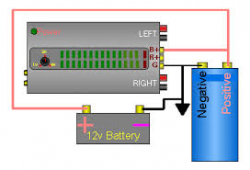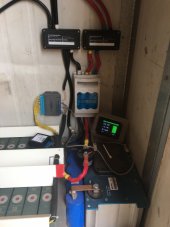32 volt boater
Solar Enthusiast
- Joined
- Aug 7, 2022
- Messages
- 427
In the car stereo world they put large capacitors on the DC side for when the bass hits.
These big capacitors store electricity as instant power available for your amplifier. If the amplifier draws more current than is available from the electrical system directly, the capacitor covers the difference up to its stored capacity. The battery is not overloaded and the car voltage remains steady.



I think that maybe inverters often fail to start big AC motor loads is because the voltage on the DC side drops too much. I don't know what would happen big capacitor on the DC side of an inverter. Might work awesome, do nothing or might fry it. Don't know.
Speakers and AC electric motors, both got coils of wire to make magnetic forces.
These big capacitors store electricity as instant power available for your amplifier. If the amplifier draws more current than is available from the electrical system directly, the capacitor covers the difference up to its stored capacity. The battery is not overloaded and the car voltage remains steady.


4.0 Farad Power Capacitor LED Voltage Display Power Cap Car Audio Amplifier Capacitor Car Accessories for systems up to 2000W

I think that maybe inverters often fail to start big AC motor loads is because the voltage on the DC side drops too much. I don't know what would happen big capacitor on the DC side of an inverter. Might work awesome, do nothing or might fry it. Don't know.
Speakers and AC electric motors, both got coils of wire to make magnetic forces.
Last edited:







